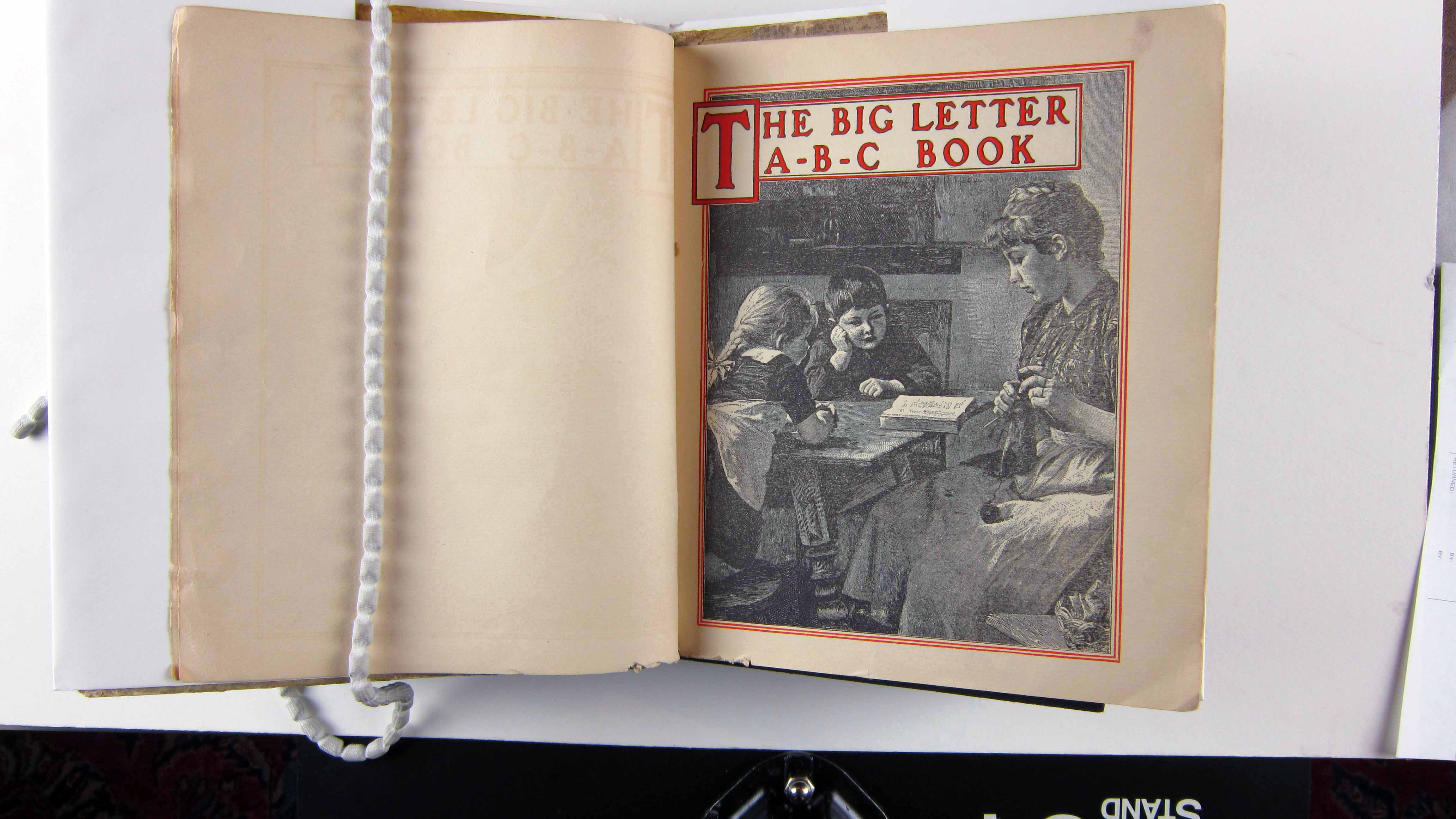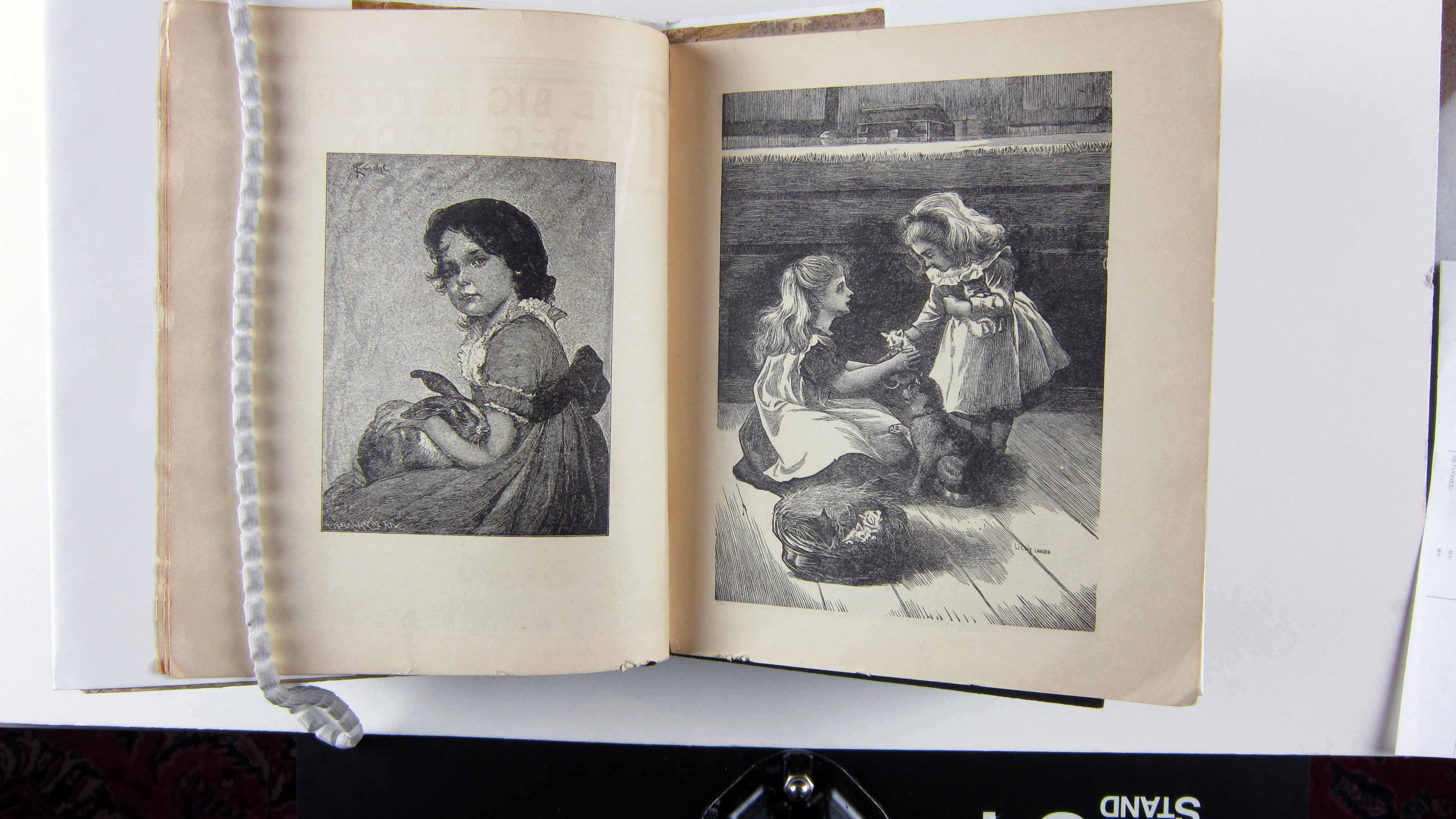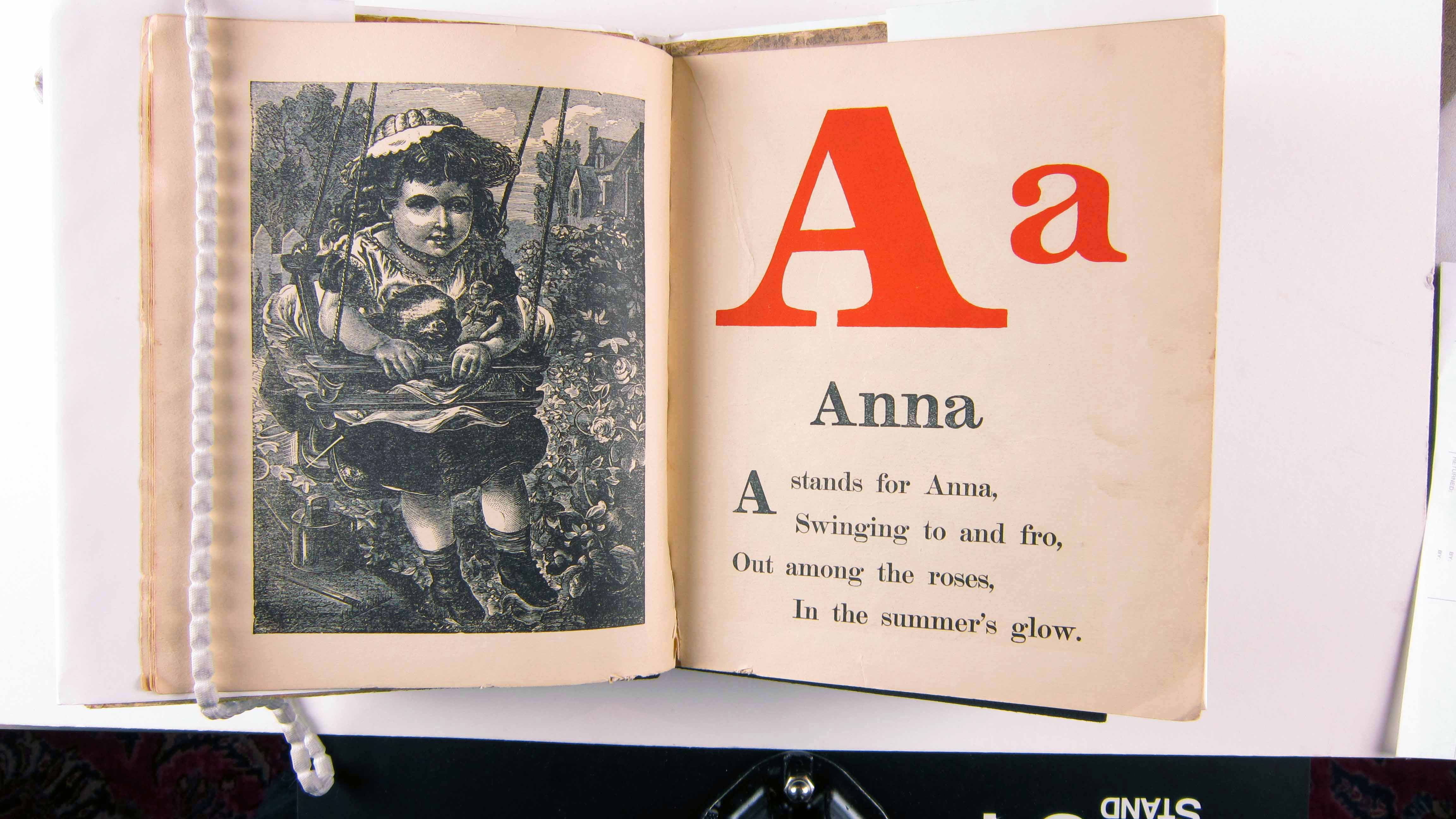

Alphabet books offer a vivid insight into the history of literacy and culture, as well as concepts of childhood. The Children's Book Collection at UCLA contains a rich array of these materials, some well-worn and much-used, some still bright and fresh. Each is a gem of print production and graphical imagery from another time and place. Though the history of alphabet books continues to the present, this exhibit focuses on the works in our collections published between 1700 and 1900, including horn books, primers, works of didacticism and seriousness, whimsy and play.
2. A Jumble ABC
3. A Little Pretty Pocket-Book
4. A New Lottery Book of Birds And Beasts
5. A Pretty Play-Thing for Children of All Denominations
8. ABC of Objects for Home And School
10. ABC with Pictures & Verses
12. Alphabet Et Instruction Pour Les Enfans
16. Dolly's ABC Book
17. Flora's ABC
18. Home ABC
22. Hornbook C. 1700
23. Large Letters for the Little Ones
24. Little ABC Book
25. Little People: An Alphabet
26. Martin's Nursery Battledoor
27. Mother Goose ABC
28. My Darling's ABC
29. Orbis Sensualium Pictus Quadrilinguis
30. People of All Nations: A Useful Toy for Girl Or Boy
31. Picture Alphabet
32. Pretty ABC
33. Railway ABC
34. Rusher's Reading Made Most Easy
38. The Alphabet of Old Friends
40. The Amusing Alphabet for Young Children Beginning To Read
42. The Child's Christian Education
45. The Easter Gift
47. The Favorite Alphabet for the Nursery
49. The Franklin Alphabet And Primer
51. The Golden ABC
55. The Moral And Entertaining Alphabet
57. The Old Testament Alphabet
59. The Picture Alphabet for Little Children
62. The Sunday ABC
63. The Union ABC
64. The Young Child's ABC, Or, First Book
65. Tom Thumb's Alphabet: Picture Baby-Books
67. Warne's Alphabet And Word Book: with Coloured Pictures
68. Wood's Royal Nursery Alphabet
Title The Big Letter ABC Book





Brief description Quarter beige cloth with illustrated paper over boards; repaired with light blue tape between inner front and back covers and their free fly leaves. Gift of Jerome Cushman, 1998.
Full description The Big Letter A-B-C Book is a larger-format alphabet book with many finely-detailed illustrations depicting and describing children in a domestic environment. As children's books became cheaper and easier to produce, even alphabet books became less concerned with being strictly educational. The Big Letter A-B-C Book features the letters quite prominently, but establishes only the weakest links between the letters and the vignettes of childhood that accompany each. Although this might not have been the most useful tool for teaching children who did not yet know how to read, the large, realistic imagery served another important role: exposing children to the societal mores and expectations of the period in addition to language.
Literacy Although The Big Letter A-B-C Book presents the alphabet within using an extremely prominent font, and the only color print to be found; the verse and image accompanying the letter are only tenuously connected. The book as a whole does not seem overly concerned with providing children with instruction on the sounds of the respective letters, or examples or rhymes that would provide a more useful mnemonic device for learning the alphabet. The Big Letter A-B-C Book is either targeted toward young readers who already have been introduced to the alphabet and phonics, or was meant more as a means to indoctrinate children into the existing cultural mores.
Childhood The Big Letter A-B-C Book uses its many large illustrations to great effect showing an idealistic notion of childhood prevalent in the Victorian era. The children present are portrayed as cherubic beings that embody the notion that children come into the world completely innocent to the flaws and foibles that characterize grown adults. In keeping with this notion that children were blank slates, the children in this book seem incapable of doing wrong, and represent a romantic, idyllic concept of youth. The many examples of child behavior in this book can be seen as a teaching device by which the children reading it might absorb the proper behavior on display.
Iconography The many examples of children within The Big Letter A-B-C Book provide ample examples of how children were expected to behave, with clear distinctions drawn by both gender and class. The girls in the book are shown exhibiting motherly characteristics such as nurturing their dolls, while the fewer examples of boys are more likely to be shown exploring the world rather than simply staying clean in the domestic environment. Lower class children are depicted doing chores and frolicking with animals while those dressed in finer clothes tend to be shown leading lives of relative leisure.
Production Although the publishers, McLoughlin Bros., were known for their use of chromolithography, the application of color printing in this book is limited to the large examples of each letter of the alphabet. The engraved images show substantial levels of detail, but perhaps considering the relatively large size and page count, this book would have been a luxury item even without color illustrations.
Publisher McLoughlin Brothers Inc.
Publication place New York
Date 1898
UCLA Call Number PE1155 .B47 1898
Repository UCLA Charles E. Young Research Library, Dept. of Special Collections
Technologies of production Printing
Media and Materials Paper, cloth, board, ink
Caption